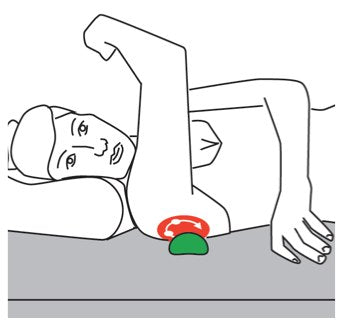Thoracic outlet syndrome (TOS) is a frequently overlooked peripheral nerve compression or tension event that is often difficult to diagnose - but can respond surprisingly fast to trigger point therapy.
TOS occurs when nerves and/or blood vessels become compressed in their passageway through the thoracic outlet which sits between your collarbone and first rib. The thoracic outlet is surrounded by bone, muscle and other tissues. Movement or enlargement of these tissues near the thoracic outlet as a result of conditions such as cervical rib, tumours in the chest, muscle enlargement and weight gain, may lead to TOS. These conditions may cause the collarbone to slip putting pressure on the blood vessels and nerves that sit underneath it leading to TOS.
TOS is one of a group of conditions that cause pain into the arm hand and fingers. Not everyone is too aware of TOS and it's not unusual for clients to work their way through a number of visits to doctors and therapists by the time they receive a confirmed TOS diagnosis.
The symptoms of TOS can be really disturbing and cause much anxiety (which doesn’t help). There are generally two types of TOS – one is an unmistakable blockage pressure (organic) to the nerves or blood supply and the other is a functional or temporary pressure issue. This functional group tends to respond very well to trigger point self-help techniques. That’s because functional TOS results from a combination of poor rib mechanics and tight muscles (especially the Scalenes and Pectoralis Minor) that cause pressure on the neurovascular structures (sometimes called a myogenic plexopathy).
TOS and Trigger Point Therapy
Trigger points can develop in muscles for a number of reasons especially overuse. When present they cause the host muscle to be shorter, tighter and tenser and they also add to the cycle of increased input to the peripheral and central nervous system. With TOS, the results of trigger point therapy can be startlingly fast; will almost always provide relief; and accelerate well being.
As is usually the case with trigger point therapy, the hands-on treatment is likely to be most effective when combined with correct stretching and strengthening exercises. When treating TOS, these typically include neck stretching, ulnar glides, upper trapezius and pectoralis stretching, back mobilisation, and rhomboid strengthening. Self treatment with pressure tools can also be very effective. See examples below:

Self Help - Subclavius

Self Help - Infraspinatus

Self Help - Infraspinatus

Self Help - Pectoralis Minor
Комментариев нет:
Отправить комментарий